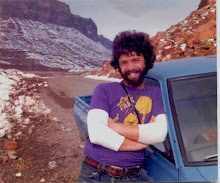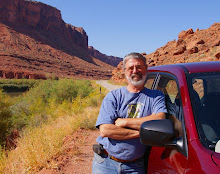
Up to now I have largely steered clear of controversy on this blog, but at the risk of looking like a bad ass, I feel that I need to address the divisive issue of so-called “wild horses and burros”. If wild horses looked like cows or sheep, there never would have been a Wild Horse and Burro Act passed by Congress. They graze like cows and sheep. They tear up the landscape like cows and sheep. But unfortunately for the untamed lands of the west, horses and burros fall into the classification of “charismatic megafauna”....cute, furry animals that are just too adorable not to protect. For public land administrators, these hoofed critters present a real management challenge, while to animal rights advocates they have become icons of the historic frontier.
So let’s set a few things straight from the get go. Wild horses and burros are not native. They are descendants of animals that either escaped captivity or were set free by their original owners for one reason or another. When Lewis and Clark traversed the continent in 1803, there were no herds of majestic horses running fast and free. There were no fuzzy burros roaming the desert southwest either. But there were vast herds of bison, antelope and elk who inherited their environment legitimately through natural evolutionary processes. Yet the wild horse has somehow come to represent the pre-Colombian ideal of an undiscovered land.
As an ex-land manager myself, I can honestly attest to the folly of trying to maintain a non-native animal population in a place they never should have been in the first place. Much of Red Rock Canyon National Conservation Area is also a Wild Horse and Burro Management Area as set aside by the Wild Horse and Burro Act. This act is a mandate, passed by Congress, to protect these creatures by any means possible. As a result, over the last thirty years, populations of horses and burros throughout the west have exploded.
At Red Rock Canyon, the scarce perennial springs were trampled and soiled by these interlopers, leaving the native big horns to fend for themselves elsewhere. For the horses, it was a marginal existence at best and I can well remember what it cost the BLM in one instance to haul water out in the middle of nowhere to sustain six scraggly mustangs. These nags had no business being where they were but because they were there, we had to provide for them. The burros were a slightly different story. Native to the Siberian steppes and well adapted to extreme habitats, they bred like rabbits and could forage and survive just about anywhere.
So what about the BLM’s adoption program, you might ask? I can only say this. Just about anyone who has ever wanted to adopt a horse or burro has done so already. There are more animals than there are willing adopters. Currently BLM has over 34,000 horses and burros in captivity which they must feed and maintain at an annual cost to taxpayers of over $29 million dollars a year! And this figure doesn’t take into account the cost of endless round-ups, water hauls, and "range improvements."
Now, I am not insensitive to horses and burros per se. I don’t have an axe to grind here. I am just calling for some sensible solutions to an undeniable problem. Mass sterilization might work though it could be rather costly and logistically difficult. Removal by shooting or trapping is another option. This is the one that raises the hackles of the animal rights folks. But think about it. These are feral animals.....like cows, sheep and pigs. They just happen to look prettier. The faster we restore some balance to public lands, the better for all of us, the better for the native animals, and the better for the horses and burros who can live a happier, healthier life.













